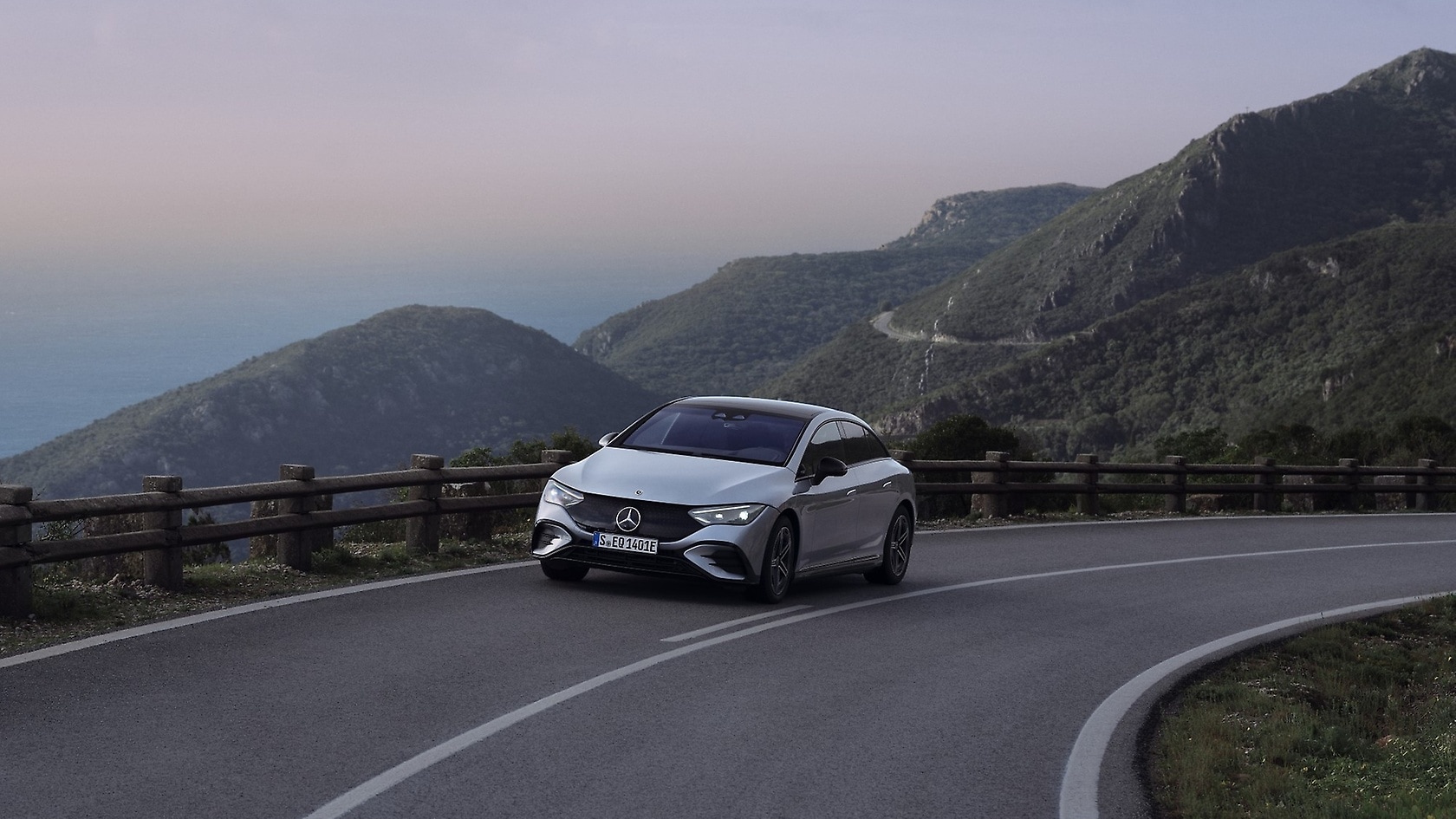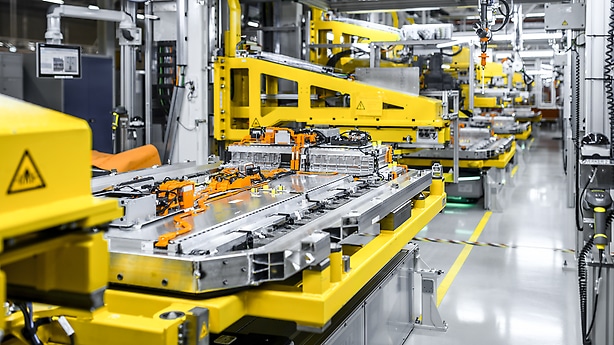The overarching goal of the so-called circular economy is to keep as much as possible of the raw materials used in circulation. This can decrease the negative impact on the earth’s ecosystem and significantly reduce the consumption of natural resources. Mercedes-Benz too is increasingly focusing on measures that promote the circular economy.
Our aim is to increasingly decouple the consumption of resources per vehicle from the growth in vehicle sales. We are therefore working to close material cycles in order to increase the share of secondary raw materials (recyclates) in our vehicles and further improve the efficiency of our processes. In this way, we intend to reduce the overall consumption of resources and advance the circular economy.
As part of our holistic “Design for Environment” approach, we keep the circular economy in mind from the very start as we develop our products. During the vehicle development process, we already prepare a concept for each vehicle model that involves examining all of its components and materials to see whether they are compatible with a circular economy approach. This process includes analyzing all the components and materials to find out how suitable they are for the various stages of the recycling process. As a result, all Mercedes-Benz car models are 85 percent recyclable in accordance with ISO 22 628. Moreover, they comply with the European End-of-Life Vehicles Directive 2000/53/EC, which specifies that 95 percent of the material in passenger cars and vans with a gross vehicle weight of up to 3.5 tons has to be capable of being reused or recovered.
Use of recyclates
The increased use of recyclates in our vehicles conserves natural resources and can deliver an overall reduction of their consumption despite an increasing production volume. Mercedes-Benz has set itself the target of increasing the share of secondary raw materials in its car fleet by an average of 40 percent by 2030.
The use of recycled materials is also getting increased political attention. For example, the European Commission has supplemented the European End-of-Life Vehicles Directive 2000/53/EC with the European plastics strategy, which requires manufacturers to use more recycled materials in vehicle production. Already since 2000, our requirement specifications for new Mercedes-Benz cars has specified a minimum proportion of components containing recycled materials. This proportion varies depending on the vehicle’s model and series.
In the EQS, components with a total weight of over 80 kg are made partly from resource-saving materials. For example, the load compartment recess for the EQS is manufactured in an innovative injection moulding process and includes 60% recycled content. In addition, the thermoplastic material is easy to recycle, which conserves resources. In the upcoming E-Class, it is planned to make the load compartment well out of recycled material to 80%. The floor coverings in the EQS use a nylon yarn made from recycled carpets and recycled fishing nets. In the EQE a total of 184 components, as well as small parts such as press studs, plastic nuts and line fasteners, representing a total weight of 78.3 kg, can currently be made partly from resource-saving materials.
Effective lightweight construction
Lightweight construction is another key element of resource conservation. Through effective lightweight construction we make our vehicles more economical and more efficient. Intelligent lightweight construction can reduce the weight of a vehicle. In order to ensure the high safety and comfort standards at the same time, it is important to select the right material. Component design and manufacturing technology also play an important role.
At 35 percent, the body shell accounts for the biggest share of the total weight of a car with a conventional drive system. This is followed by the chassis at 25 percent, the comfort and safety equipment at 20 percent, and the engine and transmission at 20 percent. Thus the most effective approach is to focus on the vehicle bodyshell.
In the area of lightweight body construction, Mercedes-Benz is increasingly working with aluminum alloys for exposed automotive paneling (hood, fenders, roof, trunk lid) and reinforcement components (hood lining, roof reinforcement). Aluminum is not only lightweight but can also be recycled many times without loss of quality. Its recycling process requires only about five percent of the energy that would be needed to produce new aluminum.
The value-added chain is becoming a value-added cycle
The overarching goal of the circular economy is to maintain the value of products, components, and materials as long as possible. In our measures, we are following the concept of the waste hierarchy. The top goal is to avoid waste. In order to reach this goal, we are working to extend the service life of all vehicle components — for example, by using especially long-lasting materials. We are also using resources efficiently and reducing the use of raw materials that are only available in limited amounts. Only then do we resort to measures for reusing various components and parts and for recovering materials by means of recycling.
In 1996, we set up the Mercedes-Benz Used Parts Center (MB GTC), a Group-owned specialist business that disassembles more than 5,000 vehicles per year. The sale of the parts that are disassembled there to repair shops and retail customers means that we are reusing these parts to the greatest possible extent and guaranteeing a range of products for repairs that reflect a vehicle’s current value.
Used Mercedes-Benz genuine parts are reconditioned within the framework of our remanufacturing approach and used in a second automotive life cycle.
In remanufacturing, Mercedes-Benz reconditions used vehicle parts in order to subsequently reuse them. In the process, the used Mercedes-Benz genuine parts for cars, vans, and trucks are remanufactured in such a way that their functionality, safety, and quality correspond to those of a new component. The vehicle parts are only recycled when they can no longer be reused in a vehicle.
Genuine parts that are no longer suitable for remanufacturing are repurposed whenever that is possible. One example are batteries, which are no longer suitable for reuse in a vehicle – for example, because their residual capacity is too low. These can be reprocessed for use in a stationary energy storage unit. This is how we improve the environmental balance of electric vehicles while also contributing to the establishment of a sustainable energy industry.
Finally, if parts are no longer suitable for reuse, they are recycled with the aim of retrieving as much as possible of the recyclable materials they contain.



